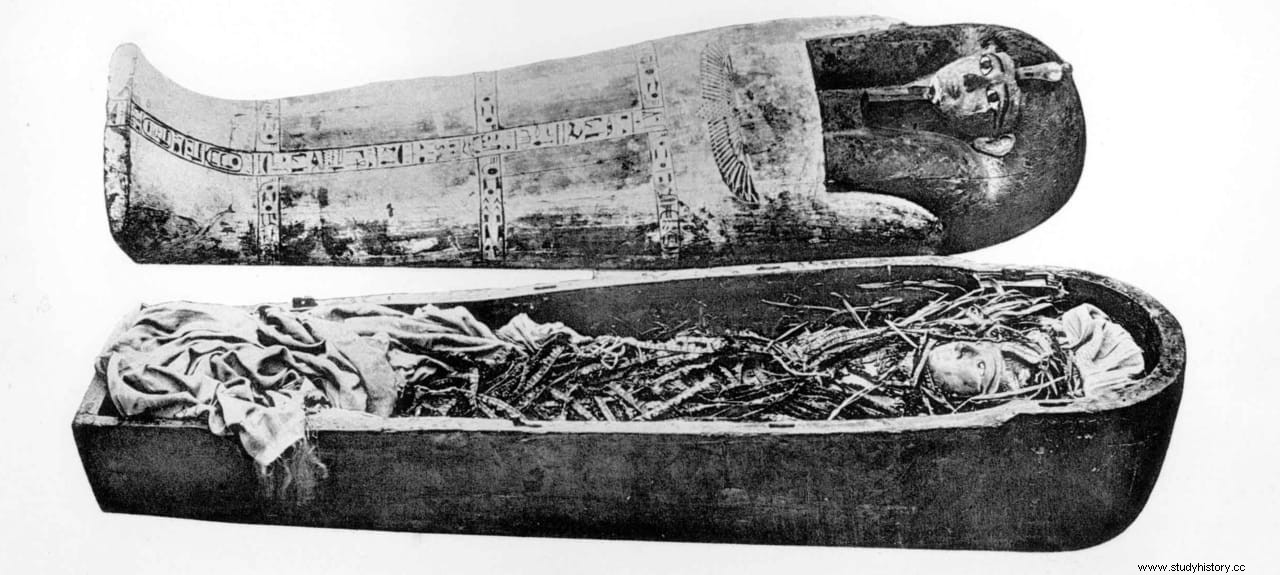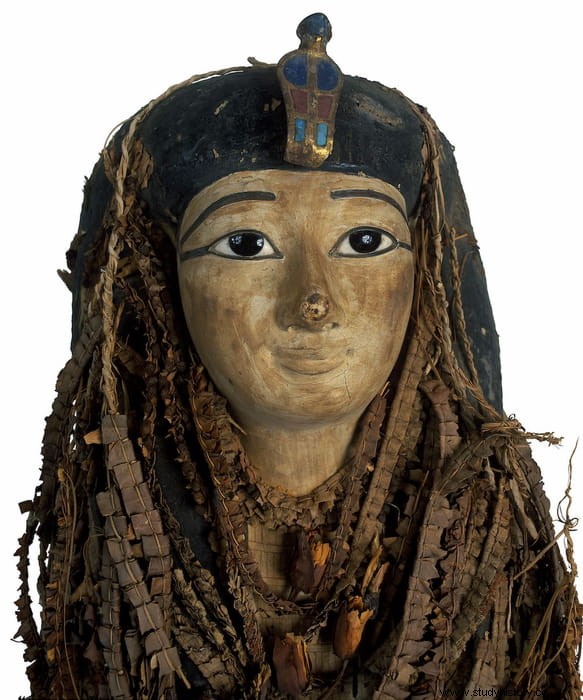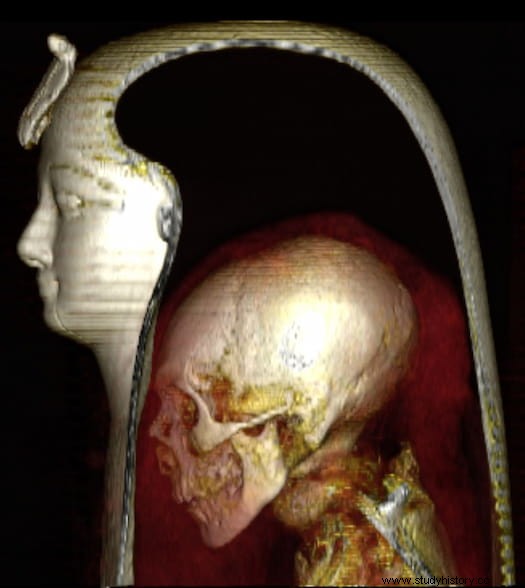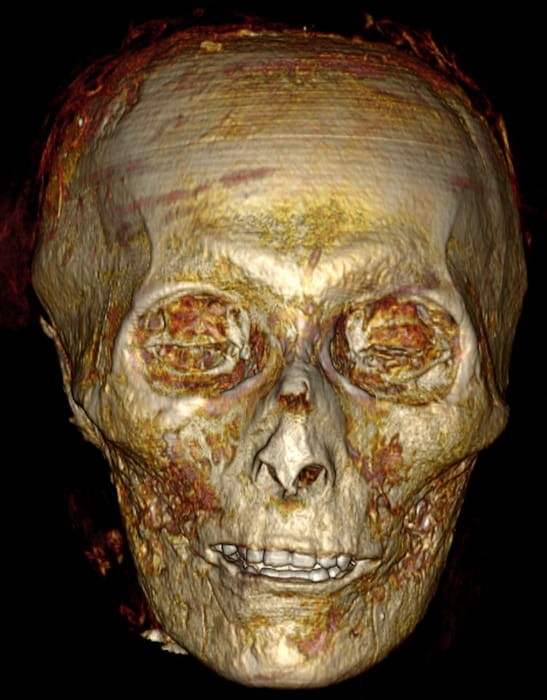All royal mummies found in the 19th and 20th centuries have long been opened for study. With one exception:Egyptologists have never dared to open the mummy of Pharaoh Amenhotep I (also known as Amenhotep I or Dyeserkara Amenhotep).
Not because of any mythical curse, but because she is perfectly draped, beautifully decorated with flower garlands, and her face and neck covered in an exquisitely realistic face mask encrusted with colored stones.
But now, for the first time, Egyptian scientists have used three-dimensional computed tomography (CT) to 'digitally unwrap' this royal mummy and study its contents. Their results are published in Frontiers in Medicine .

It is the first time in three millennia that the mummy of Amenophis has been opened. The previous time was in the 11th century BC, more than four centuries after his original mummification and burial (in 1504 BC). Hieroglyphs have described how, during the last dynasty, priests restored and reburied royal mummies from older dynasties, to repair damage done by tomb robbers.
The fact that the mummy of Amenophis I had never been unwrapped in modern times provided us with a unique opportunity:not only to study how it had originally been mummified and buried, but also how it had been treated and reburied twice, centuries after his death, by the high priests of Amun said Dr. Sahar Saleem, a professor of radiology at Cairo University School of Medicine and a radiologist with the Egyptian Mummy Project, first author of the study.

By digitally unwrapping the mummy and 'peeling back' the virtual layers of it - the face mask, the bandages and the mummy itself - we were able to study this well-preserved pharaoh in unprecedented detail Salem said. We show that Amenophis I was approximately 35 years old when he died. He was approximately 1.69 meters tall, circumcised and had good teeth. Inside the wrappings of it, he wore 30 amulets and a unique gold sash with gold beads. .
Amenophis I appears to have physically resembled his father:he had a narrow chin, a small narrow nose, curly hair, and slightly protruding upper teeth . Saleem continued: We have not been able to find any injury or disfigurement due to disease to justify the cause of death, other than numerous post-mortem mutilations, presumably performed by grave robbers after his first burial. His entrails had been removed by the first mummifiers, but not his brain or heart. .

The mummy of Amenophis I (whose name means «Amón is satisfied «) was discovered in 1881 -among other reinterred royal mummies- at the archaeological site of Deir el-Bahari, in southern Egypt. Second pharaoh of the Egyptian 18th dynasty (after his father Ahmose I, who had expelled the invading Hyksos and reunited Egypt), Amenhotep ruled from about 1525 to 1504 BC. Theirs was something of a golden age:Egypt was prosperous and secure, while the pharaoh ordered a wave of religious construction and led successful military expeditions to Libya and northern Sudan. After his death, he and his mother Ahmose-Nefertari were worshiped as gods.
Sahar Saleem and his co-author, Egyptologist Dr. Zahi Hawass, had previously speculated that the main intention of 11th-century restorers was to reuse royal funerary equipment for later pharaohs. But here they deny their own theory.

We show that, at least in the case of Amenhotep I, the 21st Dynasty priests lovingly repaired the wounds inflicted by tomb robbers, restored his mummy to its former splendor, and kept the magnificent jewels and amulets in place , Saleem said.
Hawass and Saleem studied more than 40 royal mummies from the New Kingdom in the Egyptian Ministry of Antiquities project that was launched in 2005. Twenty-two royal mummies, including that of Amenhotep I, were moved in April 2021 to a new museum in El Cairo. The face of the mummy of Amenophis I with her mask was the icon of the spectacular Parade of the royal mummies of gold on March 3, 2021 in Cairo.
We show that CT images can be usefully used in anthropological and archaeological studies of mummies, including those from other civilizations, for example Peru , Saleem and Hawass concluded.
